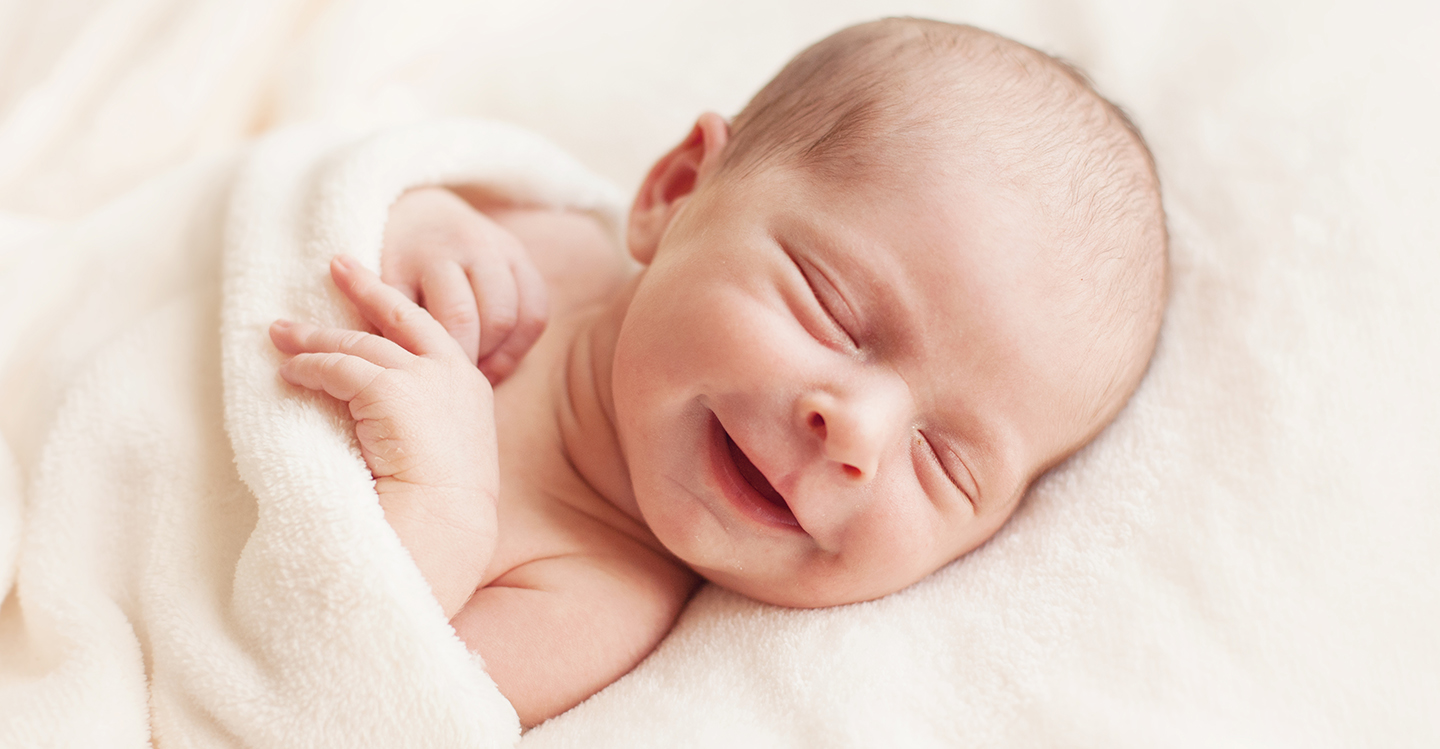What is a reflex smile?
A reflex smile is just what its name suggests: a reflexive action made without conscious purpose. This can occur in the womb, during the passing of wind, urination, or during sleep. Newborns might smile the same way they flail their limbs: as practice but without any specific purpose or intent.
The reflex smile can be recognised as being short in duration, sporadic and usually followed by a range of other facial expressions. Reflex smiles disappear around 2 months of age.
It perhaps says much about the importance of smiling that we tend to focus on that facial expression above all others and are all too ready to see a reflex smile as a social smile. While it’s completely fine to light up when you see a reflex smile (and so should you – more on that below,) babies tend to smile with real social purpose only after further maturation.
What is a social smile?
A social smile is a direct and purposeful response to a pleasing stimulus. They also tend to encompass your baby’s face and eyes, and are a direct lead into the development of laughter.
Social smiles are a sign that your baby’s nervous system is maturing and their social skills are developing. Your baby is beginning to associate seeing your face and other stimuli with pleasure and happiness and this is their way of expressing themselves.
Social smiles tend to appear for the first time between 6 to 12 weeks. Don’t stress too much if it takes a bit longer. Some studies suggest that boys, too, tend to smile later and less often (this isn’t always the case or true for every male.) It is also the first opportunity for babies to exhibit early traits of their personality.
Why is smiling so important?
Before speech, smiling is your baby’s most direct form of expression. It indicates that they recognise you, the source of their nourishment, protection and love, and that they know their own smiles are reciprocated by more smiling and happiness. It is one of the most important forms of expression in our society and vital to trust-building and healthy relationships.
A lengthened delay in smiling can be an indicator that a child is on the autism spectrum. If they have reached 3 to 4 months of age without smiling, but are developing vocalisation and respond to visual and auditory cues, consult your paediatrician.



